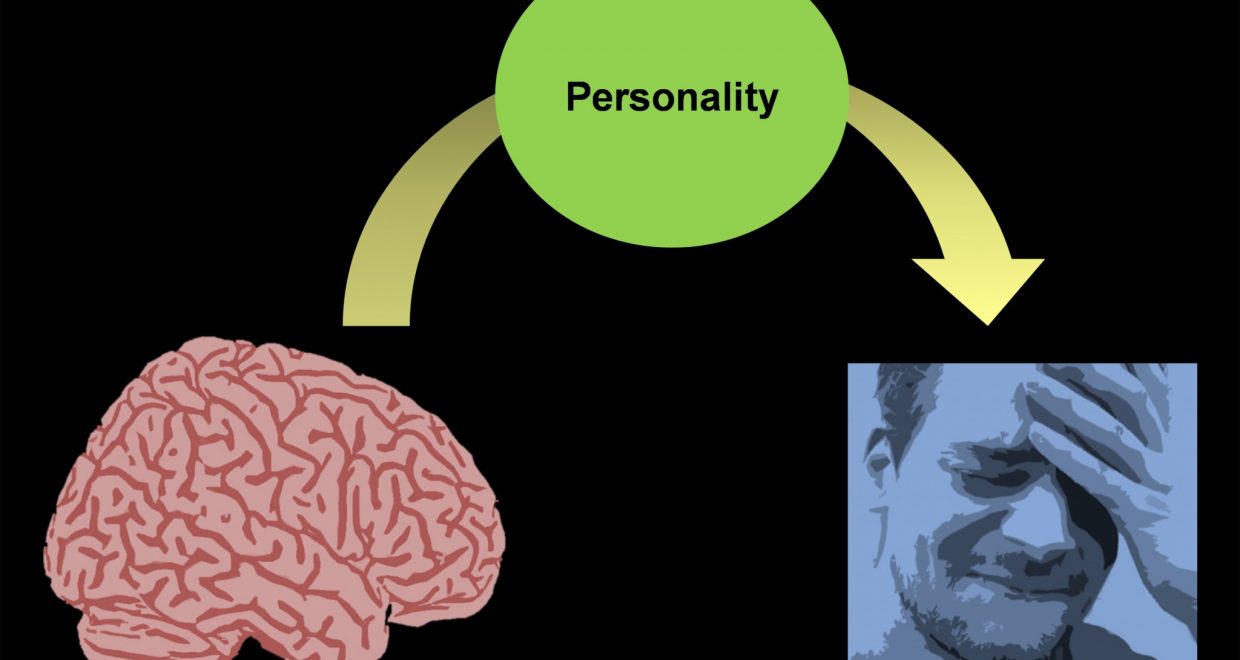How our brain and personality provide protection against emotional distress: New insights from a brain-personality-symptom approach
Anxiety and depression are currently among the most common mental disorders in the United States, and among the most prevalent causes of disability worldwide. Recent progress has been made in clarifying the links between specific brain regions and particular personality traits, but it is not clear whether there are common underlying brain and personality factors that provide joint protection against symptoms of anxiety and depression. It is, therefore, very important to improve our current understanding of the associations among the brain, personality traits, and symptoms of distress, which might be altered in these conditions.
A new study of healthy young adults provides novel evidence suggesting that the volume of a system of brain regions involved in Cognitive Control is associated with lower symptoms of Emotional Distress, and this relation is mediated by a set of personality traits indexing Resilience. “Cognitive/executive control” generally refers to the ability to coordinate thoughts or actions in relation to goals, and might include aspects such as cognitive flexibility and working memory capacity. Previous research has identified regions of the frontal lobe that appear to support cognitive control, including the middle, inferior, and orbital frontal cortices. “Resilience” refers here to a construct emerging from specific personality traits, including cognitive reappraisal, positive affectivity, and optimism. Cognitive reappraisal is an emotion regulation strategy that involves interpreting a particular situation in a way that changes its emotional impact. Positive affectivity is the tendency to experience episodes of pleasurable mood. Optimism is the tendency for people to hold generalized favorable expectancies about their future. Previous studies have shown that these traits are linked to aspects of cognitive/executive control, supporting the idea of a common Resilience variable that each of them might tap into.
Here, we used a comprehensive statistical approach involving structural equation modeling, to investigate the relations among these brain region volumes, personality traits, and symptoms of anxiety and depression. This statistical approach is particularly useful because it allowed us to examine what is common across these brain regions, and what is common across these personality traits, and analyze the associations between these common factors in relation to emotional distress. This is an important step that goes beyond what most studies test when targeting particular brain regions and personality traits.
Results of our analyses showed that greater Cognitive Control-related brain volume was associated with greater levels of the Resilience personality factor, which in turn was associated with lower Anxiety. Mediation analyses further confirmed that greater Cognitive Control-related brain volume was associated with lower Anxiety symptoms through greater trait Resilience. Interestingly, the same pattern was not found for Depression, suggesting that the associations with Anxiety are clearer, and more research will be needed to clarify the associations with Depression.
Together, these results provide an important new step forward in identifying and understanding neural and personality factors that jointly help protect against symptoms of emotional distress. Moreover, this study shows that a brain-personality-symptom approach can provide exciting new insights that have important implications for understanding both healthy functioning and clinical conditions.
Learn more by reading the authors recently published Open Access article from the journal Personality Neuroscience, Neurobehavioral Mechanisms of Resilience Against Emotional Distress: An Integrative Brain-Personality-Symptom Approach Using Structural Equation Modeling.







wanted to know how to improve Cognitive Control related to Anxiety, how if it combine with linguistic intelligence ?